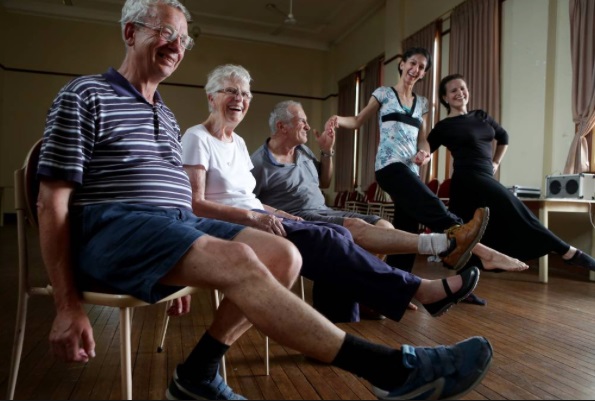I have always believed in art; it is the unique place which provides an opportunity for everyone, independent of background, colour, ideology, religion, age or physical condition to be more connected with both ourselves and others. More than that, I believe that if there is something that will save us all, it is art.
But here I would like to talk about one specific group and that is older people living with dementia. There are currently nearly 36 million people with dementia in the world (WHO, 2014). The numbers of people living with dementia worldwide is expected to double every 20 years. By 2050 it is projected there will be 115 million people with dementia worldwide, 71% of whom will live in developing countries. There are over 6 million people with dementia in Europe (WHO, 2014).
Engagement with art offers all of us an opportunity to express ourselves creatively, emotionally and intellectually, it is a chance to use our imagination, to connect with the world around us and other people. And people with dementia have the same needs as the rest us. Art can help, not to treat it but at least to increase the level of well-being not only of older people but care-givers as well. Dementia, and, particularly, the most common form of it - Alzheimer's disease – have several symptoms (which differ from person to person) and these should be taken into account in any type of art program: 1. memory loss; 2. language difficulties; 3. difficulty with visuospatial functioning; 4. apathy; 5. lack of inhibition (Alzheimer’s Society, 2014).
However, the creative and emotional abilities of a person often remain relatively strong. Often people with dementia are unnecessarily isolated, and engaging with art can have more benefits for this particular group.
There are several amazingly beautiful projects which I would like to mention. The MoMA program: "Meet Me: Making Art Accessible to People with Dementia" whose sessions typically last an hour and a half. They work with 4 to 6 art pieces which are connected by a theme. That is a teaching program which is quite common for all ages. It pushes people to articulate their opinions (which is simpler because there are no wrong answers), exchange ideas, experience intellectual stimulation, reflect on personal experiences, and participate in meaningful activity.

There is a wonderful program for individuals with another form of dementia - Parkinson's disease. The program, launched by MMDG and BPG and celebrating its 15th anniversary next year, is now a network of affiliates in more than 100 countries throughout the world. In the UK "Dance for Parkinson's" provides classes in Cardiff, Liverpool, Oxford and some other cities. This program is addressing different symptom-specific concerns as motor skills, cognitive abilities, physical confidence and depression. The principle of this concept is that professionally-trained experts who are aware of the special needs of this particular group integrate modern dance, ballet, tap, folk and social dancing. Each lesson creates a relaxing, social environment for artistic exploration of participant's minds and bodies. There is a very touching video on youtube about this program.

The last type of art project I would like to share, which can be used for working with people with dementia, is drama based. Drama is basically a form of storytelling, and this is a very important need for older people, allowing them space to reminiscence. But that is not the main purpose as such. Usually there is an opportunity to choose a theme which is easy to discuss and play. Such projects often use music, props and costume to make it into real theatre. If participants want to share their own life story they are free and given the space to do so. One of the projects running in the UK, was undertaken by the Library Theatre Company.
About the Author:
Daria Belostotskaya is a James Martin Visiting Fellow at the Oxford Institute of Population Ageing and a PhD candidate in Vienna University, the faculty of psychology.
Opinions of the blogger is their own and not endorsed by the Institute
Comments Welcome: We welcome your comments on this or any of the Institute's blog posts. Please feel free to email comments to be posted on your behalf to administrator@ageing.ox.ac.uk or use the Disqus facility linked below.













